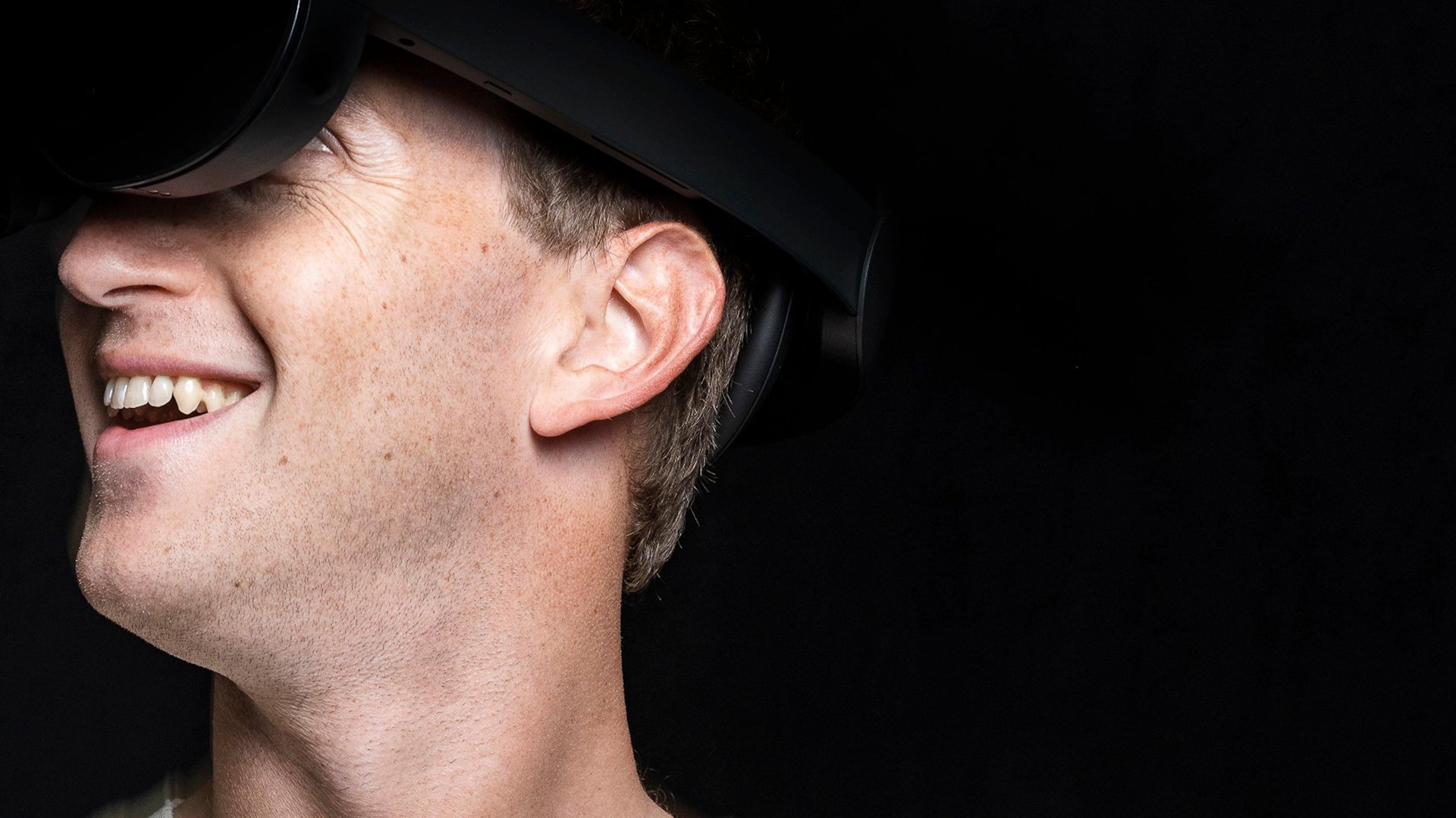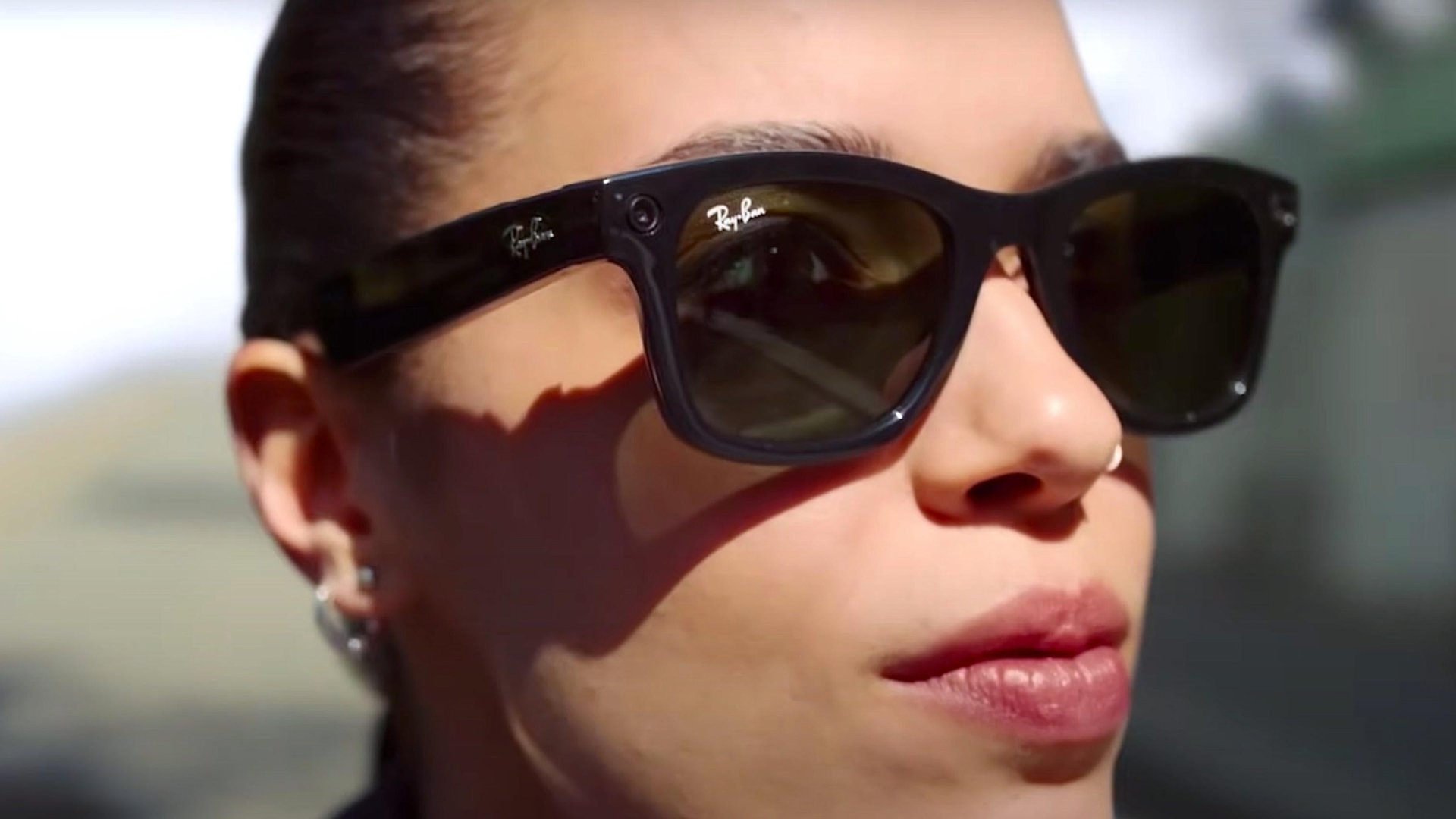Why Meta’s Ray-Ban smart glasses haven’t caught on a year after launch
Ray-Ban Stories are the most high-profile wearable for your face—and almost invisible in the mobile market.

To the casual observer, Meta’s Ray-Ban Stories Wayfarer smart glasses look nearly identical to a common pair of fashionable Wayfarer sunglasses, the model made famous by the likes of Hollywood legends James Dean and Tom Cruise.
Nothing about the product signals that it has the ability to take photos and videos, and is equipped with microphones and speakers that allow the wearer to listen to music and podcasts or even take phone calls.
And perhaps that’s part of the problem. In making Ray-Ban Stories look so normal, the company has inadvertently made its product largely invisible.
Ray-Ban Stories came out a year ago, with social media-friendly sharing technology integrated into three different frame styles. But you’ll still have a hard time finding people wearing the smart glasses or discovering many video and photo posts tagged as being shot on Ray-Ban Stories.
Why can’t Meta popularize smart glasses built on the Wayfarer, the most famous sunglasses in history?
When Google released its Google Glass smart glasses in 2013, the public’s reaction was almost uniformly negative, mostly due to its odd look. Since then, smart glasses makers have aimed to create wearables that look more like normal glasses, but with augmented reality (AR) features seen by some experts as still being at least a few years away.
While Ray-Ban Stories don’t offer AR functions, even the introduction of minimalist notifications, image capture, and audio technology into a classic frame is an accomplishment, moving the industry one step closer to the advanced-smart-glasses-in-normal-frames dream.
Nonetheless, Ray-Ban Stories just haven’t caught on—not that Meta seems to mind. When asked about Ray-Ban Stories sales, a spokesperson for Meta told Quartz, “We don’t disclose information on sales, but we’ve been very pleased with user reception to date.”
The history of Meta may offer a clue as to why sales of the smart glasses are stalling
Meta’s most successful hardware product, the Meta Quest 2, was built on the early work of Oculus, which was founded by Palmer Luckey, and which Meta, known at the time as Facebook, bought in 2014. Oculus already had a passionate user base of virtual reality (VR) enthusiasts who have subsequently helped foster the growth of the platform.

Contrast that with Meta’s only truly original, commercially available hardware product of note: a video communications display called Portal. Launched in 2018, the device hasn’t captured as much consumer interest as Meta’s VR product, but the company continues to produce new and improved versions of it.
Meta’s Ray-Ban Stories vs. Apple’s AirPods Max: a marketing lesson
In April, Ray-Ban Stories won the prestigious iF Design Award alongside Apple’s AirPods Max headphones. You can find everyone from streetwear trendsetters to Wall Street analysts wearing Apple’s latest mobile product, but Meta’s Ray-Ban Stories appear to be scarce on the streets of most big cities.
Hardware and software, it increasingly seems, demand different marketing competencies. Meta has excelled at selling and growing its software platforms— Facebook, Instagram, and WhatsApp—but when it comes to mobile hardware, the company’s ability to sign up billions of users has thus far fallen short.
Apple, on the other hand, knows how to sell hardware
Meta’s lack of a product hit is one reason why there’s so much interest in what will happen when Apple enters the smart glasses market.
Apple has had decades to perfect its ability to sell mobile hardware, first with the Newton in 1993 and then the iPhone starting in 2007. Even mobile hardware the public didn’t think it wanted at first, such as the Apple Watch and AirPods, became consumer technology staples.
Conversely, Apple still hasn’t managed to replicate Meta’s skill at developing sticky social media software. Apple’s failed social network, called Ping, launched in 2010 and is still one of the company’s biggest missteps.
Mobile hardware is Apple’s strong suit. Had the tech company partnered with Ray-Ban on a pair of smart glasses, instead of Meta, it’s difficult to imagine that the product wouldn’t be on the faces of millions of consumers right now.
Meta had the right idea in avoiding the design folly of prior smart glasses and erring on the side of established cool. But it overcorrected a bit too far by assuming 2021-2022 mobile users would detect and adopt such cleverly embedded technology so early in the history of smart glasses.
Something as simple a distinctive colored design element, or a prominent new logo might have gone a long way toward alerting onlookers that a person is wearing the company’s $300 smart glasses and not a normal, non-tech-infused $163 pair of Wayfarers.

Branding awareness is an essential part of product virality. It’s hard to ask, “What are those?” if those are mostly indistinguishable from a design that has been around for nearly 70 years.
As it stands, Ray-Ban Stories are the coolest looking and easiest to use (while still relatively affordable) smart glasses on the market that hardly anyone knows about.

There’s still a chance for Meta’s collaboration with Ray-Ban to deliver a hit. On Aug. 29, T-Mobile announced it would begin carrying Ray-Ban Stories in its stores and online. The pairing makes sense—the cell phone carrier sells plenty of other mobile accessories—but heading off customer confusion will be key. Unlike the Apple Watch, which offers the option of its own cellular connection, Ray-Ban Stories must be tethered to a smartphone for connectivity, so users will still need a separate smart phone with a wireless plan.
